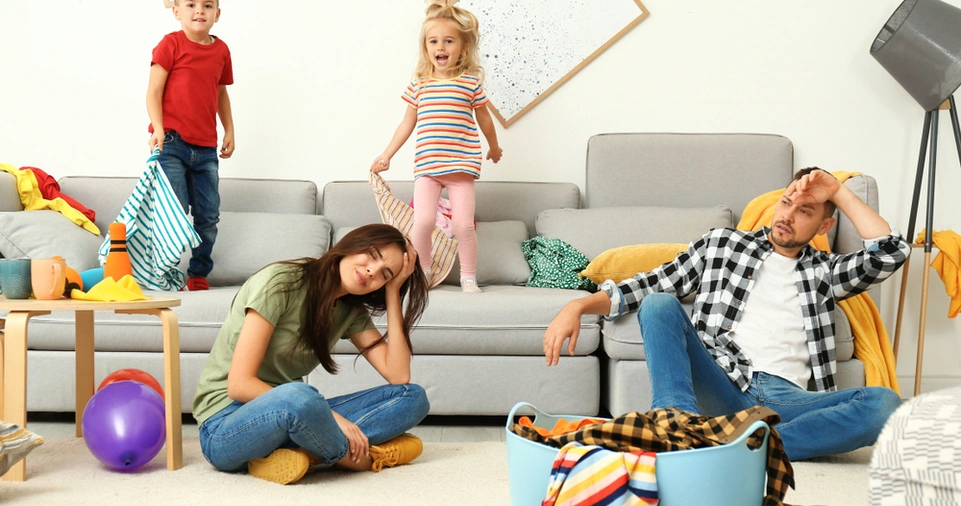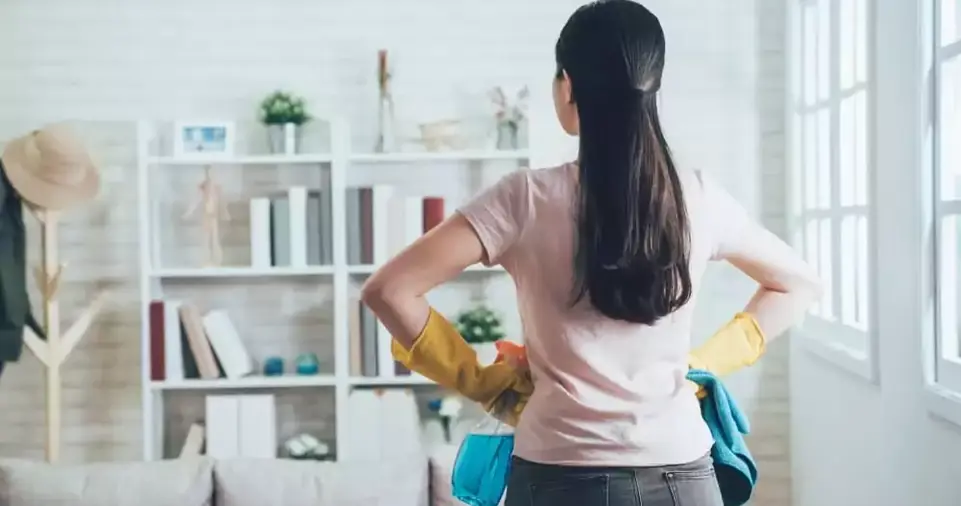In today’s fast-paced world, a cluttered home can contribute to stress, anxiety, and a lack of focus. A clean, organized, and clutter-free living space promotes relaxation, boosts productivity, and creates a sense of peace.
Decluttering is not just about getting rid of unnecessary items; it’s about creating an environment that fosters well-being. A well-organized home leads to a well-organized mind, allowing you to focus on what truly matters.
By adopting simple, effective strategies, you can transform your home into a sanctuary of tranquility.
This guide will take you through a step-by-step process to declutter your home efficiently, offering practical tips, storage solutions, and mindset shifts to maintain an organized space.
Whether you’re overwhelmed with piles of paperwork, overstuffed closets, or cluttered kitchen counters, this article will help you regain control and enjoy a more peaceful environment.
Additionally, decluttering can have financial benefits, as selling or donating unused items reduces waste while making room for things that truly matter.
With modern minimalism trends gaining popularity, more people are realizing the psychological benefits of living in an organized home.
Let’s dive into the process of decluttering and creating a harmonious living space that enhances your overall quality of life.
Why Decluttering is Essential for a Peaceful Home
Reduces Stress and Anxiety
A cluttered home often leads to a cluttered mind. When you see piles of laundry, unorganized papers, and random items lying around, it creates visual chaos, increasing stress levels.
Studies show that a disorganized environment can heighten cortisol levels, the hormone responsible for stress. A decluttered space, on the other hand, fosters a sense of control and calmness.
A structured home allows for easier relaxation, giving you the mental clarity to focus on self-care and well-being.
The process of decluttering itself can be therapeutic, offering a chance to reflect on what is truly important in your life.
Improves Productivity and Focus
A tidy space enhances concentration and allows you to be more productive.
Whether you work from home or simply need a space to focus, removing unnecessary distractions can improve efficiency and decision-making.
An organized home office or workspace helps you stay on track with tasks, reducing procrastination.
By implementing smart storage solutions, you can maintain an efficient workflow. Studies suggest that people who work in an uncluttered environment complete tasks faster and with greater accuracy.
Whether you are a student, a remote worker, or a business owner, decluttering your workspace can be a game-changer.
Promotes Better Sleep
A messy bedroom can impact your sleep quality. A clean and organized sleeping environment promotes relaxation, making it easier to unwind at the end of the day.
Decluttering your bedroom, removing electronic devices, and keeping your bed area neat can significantly improve sleep patterns.
Organizing your nightstand, limiting decorations, and ensuring your bedroom has proper ventilation and calming colors can further enhance sleep quality.
Soft, breathable bedding and a designated space for nighttime essentials create a sleep-friendly environment.
Saves Time and Energy
Think about how much time you waste searching for misplaced keys, documents, or household items.
Decluttering and organizing your home systematically reduces the frustration of looking for things, saving you valuable time and energy.
By implementing efficient labeling and categorization, you can make daily tasks smoother.
Investing in smart home organization tools, such as drawer dividers and modular shelving, ensures everything has its designated place, making cleanup faster and easier.
Creates a More Inviting Space
A clutter-free home is more welcoming for both residents and guests.
Whether you’re hosting a family gathering or simply enjoying your personal space, an organized home makes social interactions more pleasant and stress-free.
Additionally, a clean home reduces allergens and dust buildup, making it healthier for you and your loved ones.
The psychological effect of a well-organized home extends to better mood regulation, enhancing overall happiness.
ALSO READ: Buy Tether (USDT) with Google Pay Instantly
Step-by-Step Guide to Decluttering Your Home

Step 1: Set Clear Goals and Make a Plan
Before you start decluttering, it’s essential to set specific goals. Do you want to clear out your garage, tidy up your living room, or organize your entire house?
Break down your decluttering project into manageable steps. Create a checklist of rooms and areas that need attention, and allocate a specific timeframe for each task.
Creating a timeline and setting deadlines for each section of your home can prevent burnout and keep you motivated. Taking before-and-after pictures can also be a great way to track progress and stay encouraged.
Step 2: Use the Four-Box Method
One of the most effective decluttering techniques is the Four-Box Method.
Label four boxes as follows:
- Keep: Items you use regularly and need to keep.
- Donate: Things that are in good condition but no longer serve a purpose for you.
- Trash: Broken or unusable items that should be discarded.
- Store: Seasonal or rarely used items that need to be kept but stored properly.
This method prevents you from hoarding unnecessary items while making thoughtful decisions about what truly adds value to your life.
Step 3: Declutter by Category, Not by Room
Instead of tackling one room at a time, try decluttering by category.
This approach, popularized by Marie Kondo, ensures that similar items are assessed together, making it easier to decide what stays and what goes.
- Clothes: Go through your wardrobe and remove clothing you haven’t worn in over a year.
- Books & Papers: Organize books, documents, and magazines. Shred unnecessary paperwork and digitize important files.
- Miscellaneous Items: Sort through kitchen gadgets, tools, and decorative pieces.
By focusing on categories, you can develop a system that prevents unnecessary purchases and keeps your belongings in check.
Step 4: Apply the 90/90 Rule
A practical rule to determine whether an item should be kept or discarded is the 90/90 Rule:
- Have you used it in the last 90 days?
- Will you use it in the next 90 days? If the answer is no to both, consider letting go of the item.
Step 5: Maximize Storage Solutions
Effective storage solutions help maintain an organized home.
Consider the following storage ideas:
- Use Vertical Space: Install shelves and wall-mounted racks.
- Invest in Baskets and Bins: Group similar items together in labeled bins.
- Under-Bed Storage: Utilize under-bed drawers for seasonal clothing and bedding.
- Drawer Organizers: Keep small items neatly arranged in drawers.
Step 6: Develop Daily Decluttering Habits
Maintaining a clutter-free home requires consistency.
Adopt these daily habits:
- The 10-Minute Rule: Spend 10 minutes each day tidying up.
- One In, One Out Rule: When bringing in a new item, remove an old one.
- Nightly Reset: Before bed, take a few minutes to return things to their proper places.
ALSO READ: How to Organize Your Day for Maximum Productivity
Final Thoughts
Decluttering your home is an ongoing process, but the benefits of a tidy, organized space are well worth the effort.
By following these steps, you can create a peaceful, stress-free environment that enhances your well-being. Start small, stay consistent, and embrace the joy of a clutter-free home. Which area will you tackle first?
Let us know in the comments below!







